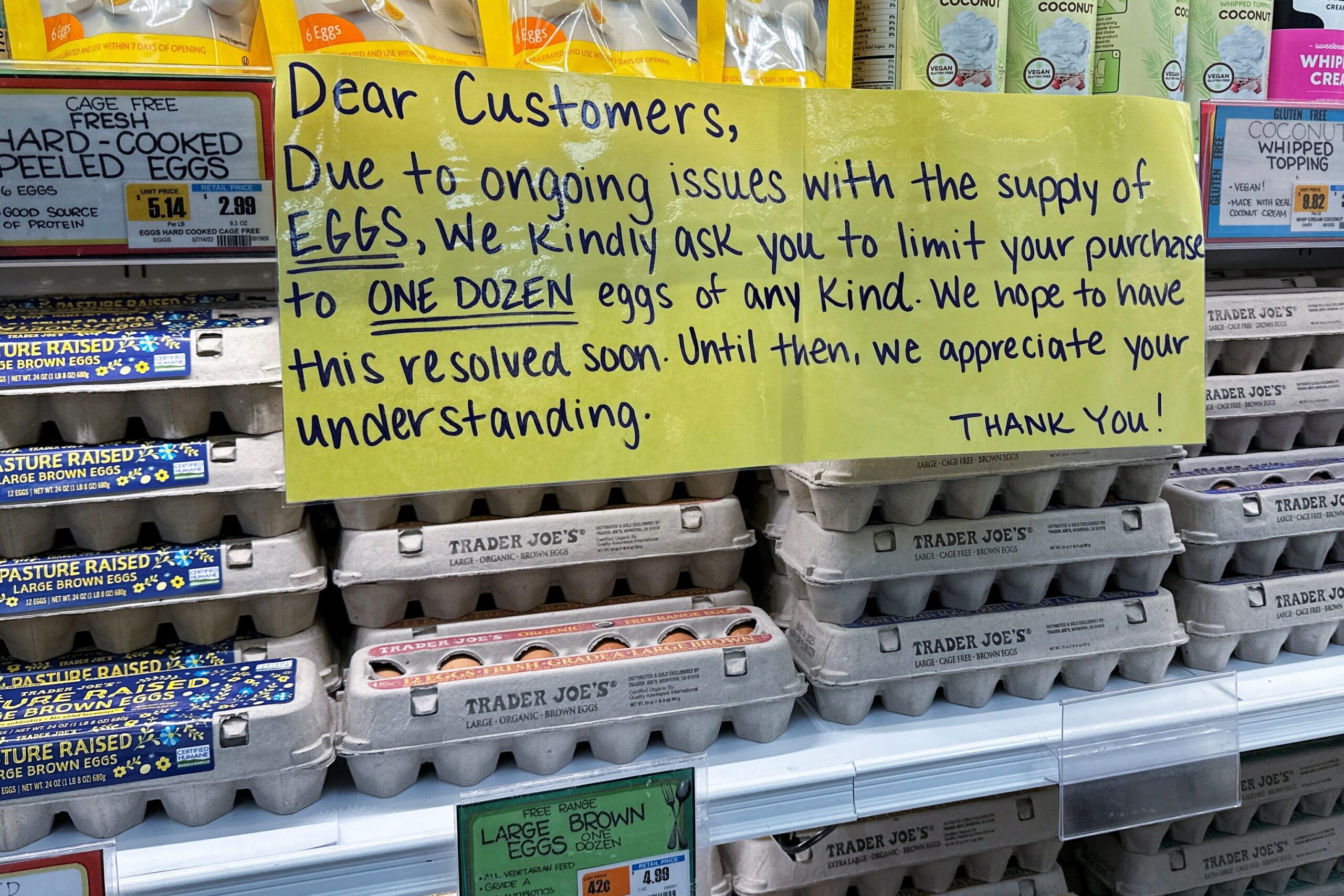
Egg Scarcity and Soaring Prices: A Nationwide Crisis
The Crisis Unfolds
The retail landscape has been jolted by unprecedented egg shortages and price surges, a direct consequence of the ongoing avian influenza outbreak. To mitigate the crisis, major retailers like Trader Joe’s and Costco have implemented purchase limits on eggs to ensure fair distribution and availability.
Trader Joe’s Restricts Purchases
Trader Joe’s has imposed a nationwide limit of one dozen eggs per customer per day. This measure aims to prevent hoarding and ensure that all shoppers have an equal opportunity to purchase eggs. The company acknowledged the inconvenience but expressed hope that the limits would allow more customers to secure their essential egg supply.
Costco Follows Suit
Costco, another retail giant, has adopted a similar approach. Customers are now restricted to purchasing a maximum of three egg packages, typically sold in cartons of two dozen or four dozen. This move is intended to address the growing scarcity of eggs and limit bulk purchases.
Other Retailers Monitor the Situation
Aldi, Whole Foods, and Walmart are among the other grocery retailers who are monitoring the egg crisis closely. They have not yet announced purchase limits but remain alert to the potential need for such measures.
Social Media Outcry
The egg shortage has sparked outrage and frustration among consumers. Social media platforms are flooded with photos and videos of empty egg shelves, purchase limits, and shoppers resorting to panic buying. The crisis has generated widespread concern about the availability and affordability of this essential food item.
National Purchase Limits
While no nationwide purchase limits have been imposed on eggs, Walmart has implemented a restriction on 60-count cartons. Customers are permitted to purchase only two such cartons at a time. This measure is aimed at ensuring a wider distribution of eggs and preventing individuals from stockpiling large quantities.
Waffle House’s Temporary Surcharge
Waffle House has implemented a temporary surcharge of 50 cents per egg due to the dramatic increase in egg prices. This surcharge is applicable at approximately 2,100 Waffle House diners nationwide. The company explained that this measure is necessary to avoid increasing menu prices across the board.
Cracker Barrel Resists Price Hikes
In contrast to Waffle House, Cracker Barrel has stated that it will not impose an extra charge for eggs. The restaurant chain highlighted its commitment to keeping its menu prices affordable despite the egg crisis.
Avian Influenza Outbreak: The Root Cause
The ongoing bird flu outbreak has decimated egg-laying poultry populations in the United States. Since January 2022, approximately 150 million poultry have been infected across 50 states. As a result, infected birds have been culled in large numbers to prevent the spread of the virus.
Impact on Egg Prices
The avian influenza outbreak has had a profound impact on egg prices. By the end of 2024, the average price of a dozen eggs in the U.S. had reached $4.10, double the cost reported in August 2023. According to the U.S. Department of Agriculture, egg prices are expected to rise by approximately 20% over the year, significantly outpacing the overall food price forecast of 2.2%.
Millions of Hens Lost
The Centers for Disease Control and Prevention reports that more than 13 million hens have been slaughtered or lost since December due to the avian influenza outbreak. This massive loss has drastically reduced the supply of eggs, leading to the current shortages and price increases.
Ongoing Monitoring
The egg crisis is being closely monitored by both the government and retailers. The U.S. Agriculture Department continues to update its egg markets overview, providing data on the extent of the avian influenza outbreak and its impact on egg supply and prices.
Conclusion
The egg scarcity and price hikes have created significant challenges for consumers and businesses alike. Retailers are implementing purchase limits to ensure fair distribution, while restaurants are grappling with the rising cost of eggs. The avian influenza outbreak remains the driving force behind this crisis, and its resolution is essential for restoring stability to the egg market.
